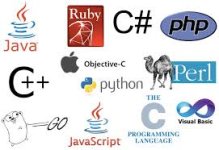Understanding Computer Languages: The Backbone of the Digital World
In today’s technology-driven world, computers have become an essential part of our daily lives. From smartphones and laptops to cars and household appliances, computers are embedded in everything. But have you ever wondered how these machines understand and perform specific tasks? The answer lies in computer languages — a set of rules and instructions that help humans communicate with machines. Without computer languages, the modern digital world would not exist.This article explores what computer languages are, their types, history, features, applications, and how they continue to shape our future.
What is a Computer Language?
A computer language is a formal language used to give instructions to a computer. These languages are used to create software programs, control hardware, and perform a wide range of computational tasks. Just as humans use different spoken languages like English or Hindi to communicate, computer languages enable communication between humans and computers.Why Are Computer Languages Important?
Computer languages are essential because they:- Bridge the gap between human logic and machine understanding.
- Enable the creation of applications, websites, games, operating systems, and more.
- Help in automating tasks and processes.
- Allow for innovation and problem-solving using technology.
Types of Computer Languages
Computer languages are broadly classified into the following types:1. Machine Language (First Generation)
- The most basic form of language.
- Written in binary code (0s and 1s).
- Directly understood by the computer's hardware.
- Difficult for humans to write and understand.
- Example:
10101011 11001010
2. Assembly Language (Second Generation)
- A step above machine language.
- Uses mnemonic codes like ADD, MOV, SUB instead of binary.
- Requires an assembler to convert it to machine language.
- Still hardware-dependent and difficult to write.
css
CopyEdit
Code:
MOV A, B
ADD A, 053. High-Level Languages (Third Generation)
- Closer to human language and easier to understand.
- Uses English-like syntax.
- Requires a compiler or interpreter to translate into machine code.
C, C++, Java, Python, JavaScript, Ruby, etc.
Use: Software development, web development, data analysis, app development.
4. Very High-Level Languages
- Even more abstract and easier to use.
- Often domain-specific, such as SQL for databases or MATLAB for mathematical modeling.
SQL, MATLAB, R, SAS
Use: Scientific computing, statistical analysis, database management.
5. Fourth and Fifth Generation Languages (4GL & 5GL)
- 4GLs are designed to be closer to human language for non-programmers.
- 5GLs focus on AI, logic programming, and machine learning.
SQL, Oracle Reports, Informix
Examples of 5GL:
Prolog, LISP (for AI)
Popular Computer Languages Today
Let’s take a look at some widely-used languages and their applications:- Python: Easy to learn, used in web development, data science, automation, AI.
- Java: Platform-independent, used in mobile apps, enterprise software, web servers.
- C/C++: Used in game development, operating systems, performance-critical software.
- JavaScript: Main language for web development and interactive websites.
- SQL: Used for managing and querying databases.
Choosing the Right Computer Language
The best language to use depends on the task:| Purpose | Best Languages |
|---|---|
| Web Development | HTML, CSS, JavaScript, PHP |
| Mobile Apps | Java (Android), Swift (iOS), Kotlin |
| Game Development | C++, C#, Unity |
| Data Science | Python, R |
| Database Management | SQL |
| System Programming | C, C++ |
Features of Good Computer Languages
A good computer language should:- Be easy to read and write.
- Have clear syntax and structure.
- Be efficient in terms of performance.
- Support modularity and reusability.
- Offer community support and libraries.
Evolution of Computer Languages
- 1940s-50s: Machine and Assembly languages.
- 1960s: High-level languages like FORTRAN and COBOL.
- 1970s: C, Pascal.
- 1980s: Object-oriented languages like C++.
- 1990s-2000s: Java, Python, web languages.
- 2010s-Present: Focus on AI, machine learning, and data science languages like R, Python, Julia.
Applications of Computer Languages
Computer languages are used in every field today:- Healthcare: Software for diagnostics and patient data analysis.
- Finance: Stock market analysis, online banking, fraud detection.
- Education: Online learning platforms, virtual labs.
- Transport: Navigation, logistics, autonomous vehicles.
- Entertainment: Video games, animation, and music apps.
- E-commerce: Websites, mobile apps, payment gateways.
The Future of Computer Languages
As technology evolves, so do computer languages. Some trends include:- Growth in AI and machine learning languages.
- Increased use of domain-specific languages.
- Rise of visual programming and no-code platforms.
- Emphasis on security and performance.

